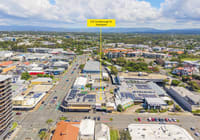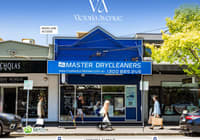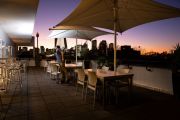
Why warehouses are becoming the first choice for many investors
When it came time for Mary Wan to put her money into real estate, houses and apartments were not at the top of her list.
Sky-high Sydney prices, flattening rents and the hassle with having to potentially find a new tenant every six to 12 months were enough to put her off.
But with interest rates currently hovering at about one per cent, leaving her money in the bank didn’t make much sense, either.
So the 25-year-old, currently studying property at the University of New South Wales, bought a strata-titled industrial unit at the Interlink Strathfield estate in Sydney’s inner west.
Ms Wan, who paid $775,000 for the 177-square-metre property, which will be completed mid-2020, had already run the numbers.
In a position not to have to finance the purchase, she said that the potential for capital gains and the consistent yields encouraged her purchase – along with the fact she could secure an inner-city property in the sub-$1 million range.
“I’ve worked in a real estate company before, at Ray White, and I do understand the opportunity cost of both residential and commercial. It tends to have a higher yield and the tenants stay longer term in commercial rather than residential. I think it’s a better investment nowadays than residential,” Ms Wan said.
In the short term, she will use the space as a base for her nascent mirror supply business, MW Home and Living.
“I think it will be around two to three years and eventually I will grow out of that property because it’s only 177 square metres.”
After that she plans to rent it out indefinitely.
“I don’t think I will sell the property, and eventually pass it on to my children,” she said.
According to Rob Thomas, Director of PrimeWest Development, Ms Wan can expect a yield well above 4 per cent when she does decide to lease out the property.
“Yields are comfortably in the 4.5 per cent o 5.5 per cent range for industrial, and leases can be structured such that tenants pay all outgoings,” Mr Thomas said.
That’s compared with a term deposit where Ms Wan could expect to receive returns of about 2 per cent (per annum on a five-year term), or a median yield of 3.9 per cent for Sydney apartments.
Industrial outperforming other assets
Real estate experts endorse Ms Wan’s decision, identifying industrial properties generally as the best for small-time investors such as Ms Wan, right through to large-scale real estate investment trusts (REITs) to direct their capital right now, particularly considering the trend towards online retailing.
“Industrial is the current outperformer of the traditional commercial asset classes, particularly in Sydney and Melbourne in those precincts with good connectivity, as these areas are best able to capitalise growth in the ecommerce sector,” said Peter Studley, head of research at Dexus, who added that the office market was also performing well.
“[It] pays to invest into a positive long-term growth driver, so the industrial sector stands out given growth in ecommerce is helping drive demand, and office is being driven by the long-term trend towards urban density in Australia’s cities.”
This trend has seen many major investment funds reassessing their portfolio mix in order to have a greater focus on industrial, according to Sass J-Baleh, national director – head of industrial and logistics research Australia at JLL.
“The expectation of capital appreciation, mainly across the major eastern seaboard cities, is a major reason why A-REITs have a higher allocation to this sector. Although the Australian industrial market is driven by strong economic, demographic and market fundamentals – there is a heightened interest in Sydney and Melbourne,” Ms J-Baleh said.
However, while a shortage of industrial land is good for Sydney rents and capital growth, it may mean fewer opportunities for investors looking to crack into the sector.
“The Sydney industrial property market remains the strongest nationally, which is consistent with the relatively higher economic and population growth. The lack of serviced industrial zoned land is another major contributor to the land and rental value growth story,” Ms J-Baleh said.
Those investors prioritising yield, and pushed out by Sydney and Melbourne prices, are looking to other capital cities.
“Within the industrial sector, Perth and Adelaide typically offer the highest yield, however, Sydney and Melbourne are favoured for their growth story,” Mr Studley said.
He expects commercial real estate in general to become increasingly popular with “mum and dad” investors in the wake of the recent slowdown in residential property, and low bank rates.
“Commercial property is definitely becoming more attractive for investors given it typically offers a yield well above prevailing interest rates and above residential yields, while also providing the prospect of growth,” he said.
“The slump in the residential market is likely to encourage more commercial investment … After a few years where residential offered the highest value redevelopment opportunity, an easing in that sector now sees the focus on other uses like office, industrial or mixed use.”
But along with choosing a good location, first-time commercial investors should be aware of other significant drivers in the sector before settling on a particular property, said Mr Studley.
“The value of commercial property is linked to the security of the income stream, consequently investors should assess the occupancy of the building and minimise vacancy.
“Values of commercial property can go up and down depending on market forces, which are driven by the economy.”










